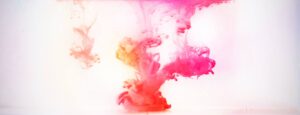
So … what was going on right before Jesus began his public ministry? roaming through the countryside visiting the synagogues and proclaiming that he was the fulfillment of the good news? He was forty days in the wilderness, fasting. With the devil breathing down his neck.
But why, though?
He went into the wilderness directly after his baptism in the Jordan River – you remember, that moment when the heavens opened and the Holy Spirit descended on him like a dove. And, then, full of the Spirit, he was led into the wilderness. Alone.
It is a surprising turn of events, really, because after he was baptized, and the Holy Spirit appeared and the voice from heaven spoke, you would expect some kind of action. Clearly, he was well-equipped to do something magnificent. The people who witnessed his baptism might have waited with expectation for what would happen next. He would surely do some extraordinary thing. But, instead, he walked away, led by the Spirit, into the wilderness.
Also known as the desert. The wilderness in that part of the world is a dry and barren place, a deadly place. This story should put us in mind of the story from Exodus, in which the Israelites were led out of bondage and into the wilderness. A place of emptiness, nothingness, death. The wilderness is, as one person described it, a place of un-creation. A place that seems to resist creation.
Jesus stayed in this place of un-creation for forty days. And at the end of these forty days in which he ate nothing, he was famished.
At that point, there were three specific temptations the devil presented to Jesus: to turn stones into bread, to worship the devil for the sake of power, and to test God’s love for him. All of these would have been hard to resist, especially the one about turning stones to bread.
But what might have been the nature of the devil’s temptations during the course of those forty days? The scriptures say that during Jesus’ forty days of isolation the devil tempted him but doesn’t say how. Maybe the temptation was just to do something, anything. And maybe Jesus resisted by doing nothing.
I realize I am taking a leap here, making assumptions based on nothing in particular, but do me the favor of considering it. What if the hardest thing for Jesus to do at that time was to simply do nothing?
And what if doing nothing was the most important – the most necessary – thing for Jesus to do at that time? It would be a hard sell for most of us, who believe that life is all about doing stuff.
We measure our value by what we have done, how much we have produced, what we have created. But the truth, which we often forget, is that an integral part of being creative is to be still and do nothing.
The story at the beginning of Genesis tells us how that played a role in God’s creation of the world. In the beginning, the earth was a void, nothing. It was, according to the author of this story, formless, the way water is formless. Most translations say that God’s Spirit moved over the waters – the word in the text is something like fluttered, or perhaps hovered. The Spirit of God hovered over the waters the way a hummingbird hovers over a flower.
The poetry of this first chapter of Genesis shows beautifully how God works in the world. God doesn’t storm in and do everything at once. God watches, hovers, waits, and creates. The process of creating requires a period of hovering.
Those who study the creative process have identified certain stages you go through to create something. It begins with some kind of preparation, like making a nest for the project. In this stage maybe you have an idea of what you want to create. You might have some parameters, some expectations and hopes. But surprisingly, this preparation is not followed by action – the next stage is incubation. Just as a mother bird, after making her nest, covers her egg and waits. A period of incubation is necessary, where the bird is doing nothing.
You might have some familiarity with this stage in the creative process. The times when you have begun your work and wracked your brain and torn out your hair in frustration, before you realized that you need to step away from it. Take a break. Do something different, or nothing at all.
Then, suddenly being struck with a creative brainstorm, out of nowhere! At that moment, you know what you need to do.
Imagine God having that brainstorm each of the six days of creation. Hovering, fluttering, waiting for the next move to present itself. And, as we are created in God’s image, we need to sometimes wait for the next move to present itself. Hovering.
It is a part of the rhythm of life – the pause. The act of hovering to discern the next move. It is a part of our process in everything we do, in fact. It’s just what we are equipped for. If we can only be mindful enough to do it.
At the university where I worked years ago, there was a program for first-generation college students, designed to provide them with resources that would help them succeed. One of the resources was mindfulness meditation.
Mindfulness is a very simple kind of meditation. You don’t need any particular pose or mantra or breathing technique. You simply practice being completely present in the moment, attentive to the here and now, available to the Spirit of God.
As simple as it is, it’s really hard to do. Our minds are like flies buzzing around, landing on one thing, then another and another. Making your mind sit still feels next to impossible. The students took classes to learn it. And it wasn’t optional – all the students in the program were required to learn the art of being still.
I had my doubts about whether it was really worthwhile. So I asked one of the students what she thought about it. She told me a story. One weekend she went home for a visit. It was homecoming weekend at her high school and she went to the football stadium along with a lot of other alumni. Behind the bleachers she ran into an old boyfriend and some of his friends. He began taunting her. He said things that he knew from past experience would get a rise out of her – he had learned how to push her buttons.
She told me that when she heard him saying these things, she recognized the routine. He would say this, she would say that, he would reply and things would escalate. But instead of slipping into the old routine, she paused. She hovered in the moment until the next right step revealed itself.
That boy didn’t know what to do. Game over.
In the pause, in the hovering, she changed a destructive pattern, which made way for something new. In this practice of waiting and looking within, she was able to find the direction the Spirit was leading her. You and I can do that too.
“Practice the pause.”
“When in doubt, pause. When angry, pause. When tired or stressed, pause.
“And when you pause, pray.”
Even Jesus had to practice the pause. Before he could begin his world-changing ministry, he needed to take forty days in the wilderness, the anti-creation, to do nothing but hover and wait. And we know from the gospels that he would go back to the pause, many times during the course of his ministry. To take himself away from it all, to pause and pray.
This pause in the process – hovering – is sacred time. Let hovering be a part of all that you do. To get out of the way and let the Holy Spirit come in, drawing you in to the creative life of God.
